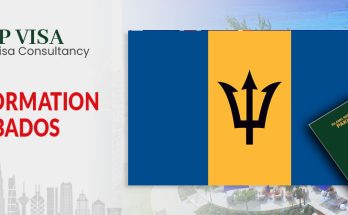Complete Guide to the Spain Visit Visa Process
Spain, renowned for its rich history, vibrant culture, and stunning landscapes, attracts millions of visitors each year. To visit Spain, you will typically need a Schengen visit visa, which allows you to travel to Spain and other Schengen Area countries. Here’s a comprehensive guide to the Spain visit visa process.

1. Types of Visit Visas
Spain, being a member of the Schengen Area, uses the Schengen visa system for short-term visits. The main types of Schengen visit visas for Spain include:
- Tourist Visa: For leisure and tourism purposes.
- Business Visa: For attending business meetings, conferences, or negotiations.
- Family or Friends Visit Visa: For visiting family members or friends residing in Spain.
- Transit Visa: For passing through Spain en route to another Schengen country. Usually valid for up to 24 hours.
2. Eligibility Criteria
To be eligible for a Spain visit visa, you must meet the following criteria:
- Passport Validity: Your passport should be valid for at least 3 months beyond your planned departure from Spain and have at least two blank pages.
- Purpose of Visit: Clearly state the purpose of your visit and provide appropriate supporting documentation.
- Financial Means: Demonstrate that you have sufficient funds to cover your stay and return travel.
3. Documents Required
The documents typically required for a Spain visit visa application include:
- Visa Application Form: Completed and signed. The form is available on the Spanish consulate’s website or from a Visa Application Center (VAC).
- Passport: Original and a copy. Your passport must be valid for at least three months beyond your intended departure date from the Schengen Area.
- Photographs: Two recent passport-sized photographs that meet Schengen visa photo requirements.
- Travel Insurance: Proof of travel insurance with coverage of at least €30,000 for medical emergencies, including repatriation. The insurance must be valid throughout the Schengen Area.
- Proof of Accommodation: Hotel booking confirmation or an invitation letter from a host in Spain. For family or friends, include a formal invitation letter and a copy of the host’s residence permit or passport.
- Proof of Financial Means: Recent bank statements, salary slips, or proof of employment. If sponsored, provide the sponsor’s financial documents.
- Travel Itinerary: Details of your travel plans, including flight reservations and accommodation.
- Visa Fee: The fee is typically around €80 for adults and €40 for children aged 6 to 12 years. Children under 6 years are usually exempt.
4. Application Process
- Determine the Relevant Consulate: Apply through the Spanish embassy or consulate in your home country or through a Visa Application Center (VAC) if available.
- Schedule an Appointment: Book an appointment online or by phone. Some consulates may accept walk-in appointments, but scheduling in advance is recommended.
- Submit Application: Attend your appointment to submit the completed application form and all required documents. Some consulates may require biometric data (fingerprints).
- Visa Processing Time: Processing typically takes around 15 calendar days. During peak times or if additional documentation is needed, it may take longer.
5. Visa Fees
The standard visa fee for a short-stay Schengen visa is:
- Adults: €80
- Children (6-12 years): €40
- Children under 6 years: Free
Visa fees are subject to change, so check the latest rates on the Spanish consulate’s website or at the VAC.
6. Receiving Your Visa
Once your visa is approved, you will receive it either via mail or you can collect it from the embassy or VAC. Ensure that all details on the visa sticker are correct, including your name, validity dates, and number of entries allowed.
7. Arrival in Spain
- Border Control: Present your passport and visa at the Spanish border. Be prepared to answer questions about your travel plans and financial means.
- Entry Stamp: An entry stamp will be placed in your passport upon approval.
8. Extending Your Visa
If you wish to extend your stay beyond the visa’s validity, you must apply for an extension at the local immigration office in Spain. Extensions are granted under exceptional circumstances and may require additional documentation.
9. Important Tips
- Apply Early: Apply for your visa at least 3 months before your planned travel date, but no more than 6 months in advance.
- Provide Accurate Information: Ensure all information is accurate and truthful to avoid delays or denials.
- Health Insurance: Make sure your travel insurance meets Schengen requirements.
10. Useful Contacts
- Spanish Ministry of Foreign Affairs: Website
- Spanish Embassy or Consulate: Locate your nearest embassy or consulate for specific instructions and requirements.
By following this guide, you can effectively navigate the Spain visit visa process and enjoy your trip to one of Europe’s most captivating countries.




